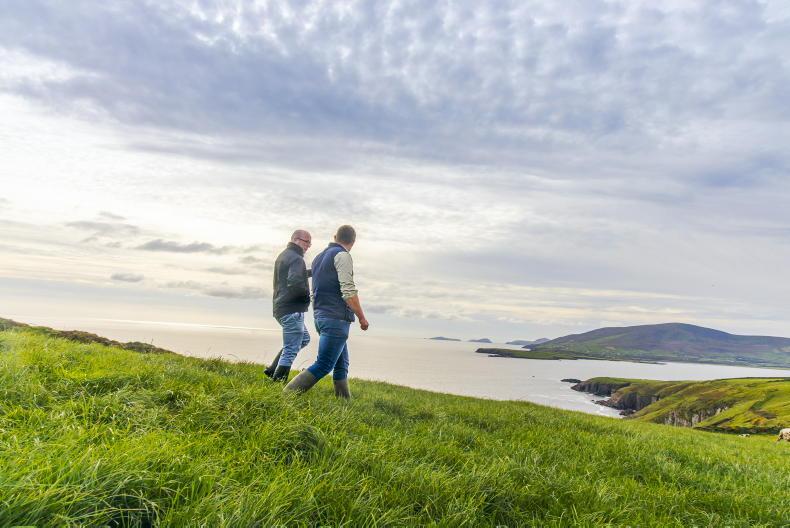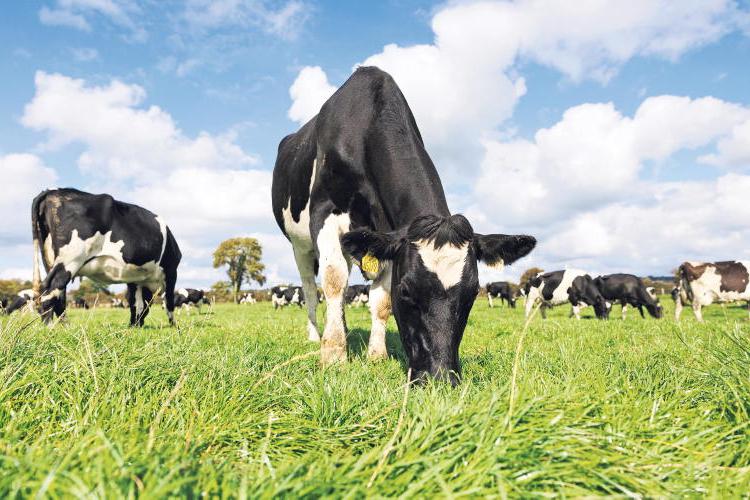The Irish Dairy Board (IDB) office in Moscow was set up in 2013. Before this, some IDB product was sold in Russia but it was imported from Germany. Now IDB Russia is attempting to build a new entity importing Kerrygold butter and cheese direct from Ireland. Here’s how it works.
Vadim Zaitsev is the boss of IDB Russia. Vadim has three staff – a sales representative who liaises with the Russian distribution companies; a marketing executive recently hired from Diageo; and an office clerk whose duties include liaising with transport and certification officials. Russian sales and distribution companies deliver and sell Irish butter and cheese around Russia.
Like most places in the world, competition for shelf space is tough in the Russian supermarkets. Recent mergers and acquisitions have made it even more difficult. Pepsico (the giant Cola drinks company) bought WMB (Wimm-Bill-Dann), the second largest dairy processor in Russia. The move was aimed at blocking the growth of key competitors. The other big player in Russia is Danone. Danone recently bought the large Russian processor Unimilk and all its brands to give it a strong foothold in a growing market. Pepsico and Danone now control over 60% of Russian market volume. The scale and power of these two dairy giants shows the challenge facing smaller competitors.
How IDB Russia works
When I was in Russia, the Kerrygold butter was coming from Irish processor Arrabawn. So the chain of events goes something like that shown in the graphic. Arrabawn butter manufactured in Tipperary is marketed outside of Ireland by the Irish Dairy Board as Kerrygold butter. So the butter is manufactured in Nenagh and travels to the Irish Dairy Board chilled warehouses in Dublin, from where it is loaded onto a cargo plane bound for St Petersburg in Russia. From St Petersburg it travels by train in chilled containers down to Moscow where it arrives into a chilled warehouse rented by IDB Moscow.
One of the four IDB distributors in Russia picks up the butter from the warehouse and brings it to their chilled distribution centre and from there is collected by another fleet of chilled lorries and taken to supermarkets all over Russia. The journey can take five weeks by the time all quality audits, tax clearances and transport is completed. A similar journey is completed by Carbery cheese which is now also on sale in Russia.
The challenge for IDB is to maintain quality at all steps of the journey. Damaged goods are no good to anyone. If the temperature changes you can get changes in the product composition that could change the taste. Sales are dependent on high quality and consistency – this is the IDB point of difference – so it must be delivered on or the business will quickly become unsustainable.
Challenges
The challenges along the way can be many and varied. Flights and trains can be late. The Russian distribution lorries can break down regularly as some diesel is very poor quality.
Rented warehousing can sometimes lack the investment required to maintain product at the correct temperatures. Travel in and around Moscow is a nightmare with traffic jams forming at all times of the day due to a poor road infrastructure and very bad weather during the long winter.
NELT is one of four distribution companies that the IDB works with in Russia. NELT was set up in 1995 to sell dairy products but has since expanded its range to sell over 900 products, such as desserts, yoghurts and cheeses. At its headquarters near Moscow, it has large chilled storage houses where 140 refrigerated trucks get filled for distribution.
NELT representatives deal with retailers, small traditional shops and wholesalers in the different regions around Russia. NELT has more than 300 sales representatives with circa 1,000 people employed in total travelling around Russia to various supermarket chains trying to get product onto shelves. The average wage for the sales reps is about €700 per month.
Essentially, NELT representatives are the face of Kerrygold butter and cheese in Russia. Many of the NELT sales representatives will never have heard of Ireland or know anything about how milk is produced in Ireland. NELT chief executive Aleksey Zolotov said: “Ireland is number 55 in the destination list for Russian tourists so knowledge about Ireland is very small. The same way Russian people relate olives with Spain if they know anything about Ireland it’s probably Guinness, Whiskey and Saint Patrick – it’s not butter.”
NELT makes a margin on what product it sells from supermarket shelves so Aleksey explained they want products with a good shelf life and margin. He said: “We want to deal with products that are aiming to grow market share. We are a professional team so we want to deal with quality products only so that after sales service and complaints are minimised.”
If NELT can buy a quality Kerrygold product relatively cheap, because it is new on the market and relatively unknown in Russia, and then it sells for a premium over local butters in supermarkets, this is good business.
There are over 20 million people living in or around Moscow so as a market it is huge in itself.
We discussed the importance of any political decisions for NELT’s business. Aleskey said: “Yes there are a couple of issues that are very important. Our government can regularly ban the importation of goods from different countries so we have to maintain a good relationship with the Russian government. We don’t want to have a lot of product on shelves and then find out that products from that country are banned. Currency devaluations are also very important to track. A 10% swing in currency between the Russian ruble and euro over two months can have devastating impact on margins.’’
Russian habits
I interviewed two Russian ladies to get their view on Irish butter and cheese. Olga works in an advertising agency in Moscow while Anna works at an electronic components factory. I talked to them about how they use butter and cheese, their tastes and preferences.
Q: What do you use butter on? Olga said: “Many Russians eat a type of crispy black bread which goes well with butter. Sandwiches are made every day for lunch and for school kids. I use it for cooking and baking as well.” Anna had relations in France and Canada so butter on French toast and baguettes was one of her favourite meals.
Q: The price of Kerrygold butter is over twice local Russian butter – will this not impact on your decision? “I know the cost of milk that makes the butter and I want high quality butter. We had very poor quality margarines and butter in Russia in Soviet times where the butter sometimes was dried out and flaky. It’s a premium but not too high a premium.”
Q: If you were advertising Kerrygold would you use the picture of green grass and cows or what would attract a Russian person to buy Kerrygold? Olga said: “No I wouldn’t use the green grass image. I’d use an image of the butter on something nice – like butter on a baguette. It’s the taste that sets Kerrygold apart from the rest and if you can show an appetising image then someone can associate the product with something nice. The gold foil wrapping also makes the product look good on the shelf.”









SHARING OPTIONS